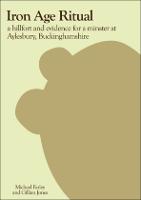Iron Age Ritual
A hillfort and evidence for a minster at Aylesbury, Buckinghamshire
Author(s)
Farley, Mike
Jones, Gillian
Collection
Knowledge Unlatched (KU)Language
EnglishAbstract
The excavation of an area within the grounds of the Prebendal, Aylesbury, Buckinghamshire, adjacent to the parish church of St Mary's, showed that the town, which lies on a slight spur, is sited within a univallate Iron Age hillfort. Early-Middle Iron Age activity included the creation of a notable ritual area contaning the burials of four children and a young woman, most accompanied by animals; and a 'bone mass' containing animal bone, mostly disarticulated. Within a generation or so of the deposit's creation, within the first half of the 4th century BC, a univallate hillfort was constructed which did not continue into the later Iron Age. Early in the Middle Saxon period a palisade trench was dug into the hillfort's ditch, which was replaced by a ditch in the 8th century. Both palisade and ditch were almost certainly the boundaries of an early minster church and it is very likely that the former existence of the hillfort influenced its siting here. An unusual piece of Merovingian glass with a moulded cross on its base is likely to have been one of the minster's possessions. The extensive minster cemetery and later Saxon development of the town is briefly noted. A significant Saxo-Norman grain deposit which has been radiocarbon dated to the 11th-12th centuries is described.


 Download
Download